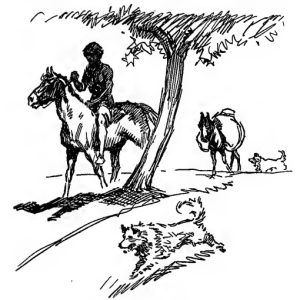Losing the Essence of Humanity:
The Scarlet Plague (1915) and Human Dignity
by Ceren Atik and Arda Kömezli

Jack London’s The Scarlet Plague is a post-apocalyptic novella set in 2073, which demonstrates the negative impact of having social classes in the contemporary world through the awakening of the protagonist to the idea of civilization. In the novella, the storyline forces the reader to question the disparities between the social classes in both modern and post-apocalyptic times. In 1915, London predicts primitive people in a jeopardized world who are ignorant of social rules and respect for each other for the year 2073.
The world of The Scarlet Plague inspires the reader to question the essence of humankind. In a community in which communication and technology are vanished, people enslave each other, and even take revenge for their previous experiences before the plague; the protagonist, Professor Smith, tells his grandsons, who represent losing humanness, about the tale of 60 years earlier, when the plague is not arisen. Despite his awakening starting during his both internal and actual journey during the plague, the reader does not awaken at the same time. Through his experiences, Smith narrates the human beings’ loss of protection and respect for each other. Along with his storytelling, the perspective he brings to the idea reveals the damaging facts of a crawling civilization and how people treat each other during painful times. While Smith describes those times, the reader witnesses inhuman treatments, such as murdering each other for food, bespoken women, and belittling between the social classes. As he tells his story, he sometimes needs to clarify the reasons why social inequalities were important before the postapocalyptic pandemic to his grandchildren, since they cannot grasp them. Through the questions they ask, London influences the reader to understand the facts about belonging to social classes, which go against the real basis of fundamental rights. As the protagonist describes his societal situation as being “the ruling classes,” he narrates that the upper classes use fear and power to oppress others. Through the narrative, the reader observes the same conditions in the real world, where particular people are manipulated to believe or take certain actions of powerful upper classes who take advantage of their positions.
Like London foresaw in the 21st century, in today’s world, people who belong to the upper, and specifically, the ruling classes, subordinate others while discriminating against their rights to integrity. Not only do superiors create illusions for others to live in, which they understand during the epidemic in the novella, but they also abuse their power and exploit their right to respect for human dignity, along with citizen rights. In this way, The Scarlet Plague is an excellent reflection of a damaged community that lacks the right to integrity, to life, and does not prevent the prohibition of slavery, torture, and inhuman or degrading treatment.

